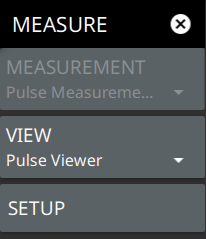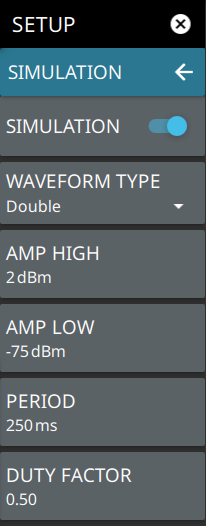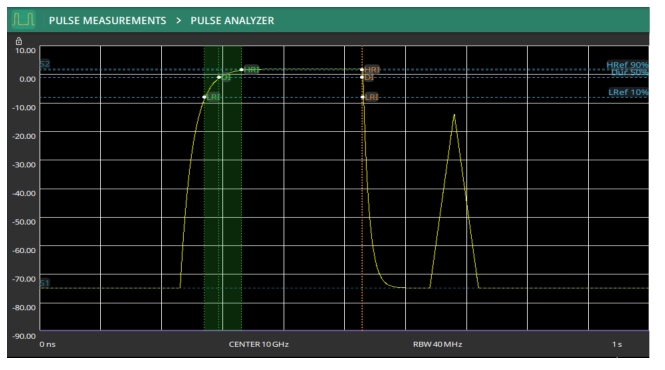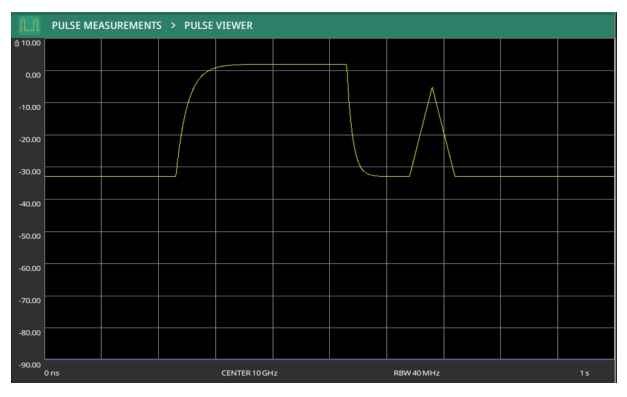 | VIEW Selects Pulse Analyzer or Pulse Viewer. Pulse Analyzer view provides the signal trace with pulse instant and transition indicators on the trace along with pulse analytics below the trace display. Refer to Pulse Analyzer GUI Overview and Pulse Measurements. Pulse Viewer displays the signal trace without the pulse instant and transition indicators nor the pulse analytics, and it enables the MARKER menu and faster sweep updates. Refer to Setting Up Markers (Pulse Viewer Mode). SETUP Opens the SETUP menu. The SETUP menu can also be accessed directly from the main menu. |




